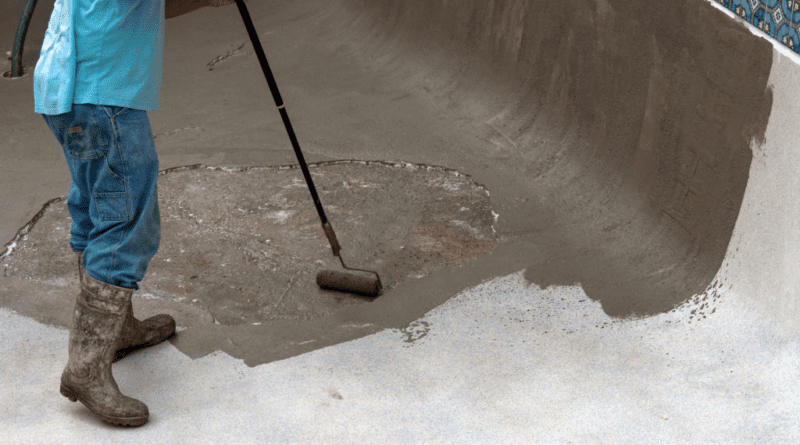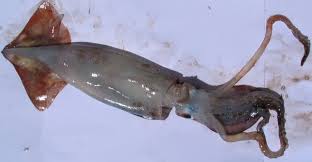How to Prevent Water from Falling Walls of Concrete Pond
Water itself has a lot of force that can pull down the wall of a concrete pond if adequate care is not taken. So in order to prevent this, the wall of the concrete fish pond must be well fortified and to do this the following must be strictly adhered to during construction:
- The blocks set must be strong
- The holes must be filled with enough concrete sand
- The outside of the wall must be plastered well without any crack
- It is also necessary for each of the corners of the pond to be fortified with concrete.
All these will help to prevent the walls of your concrete fish pond from collapsing due to water force.
Construction of Concrete Ponds
Concrete ponds, if properly constructed, can last a lifetime. In addition, they can be constructed with vertical walls to increase the ratio of gallonage to surface area. However, this material is generally expensive and requires much skill to install. If hiring the work done, ask for references and check them. Hire experience!
Whether you or someone else builds a concrete pond, a poorly constructed pond will cost more to maintain, repair or replace than it did to install. This is the main reason for the popularity of the new synthetic construction materials.
The basic construction of a concrete pond follows that of the liner ponds. The concrete should be 4 to 6 inches thick. Once the dimensions are established and an outline laid out, dig out the soil for the entire pond. Forms must be built in place to hold the concrete while it dries and cures.
Concrete reinforcing bars must be cut to size and fitted into the construction. The pond must usually be poured all in one day and in one piece, or if large, in sections. Start with the bottom, then the sides, shelves, and, lastly, the top and any coping around the edge.
Any junctions of ponds poured in sections are critical as the site of future leaks and weakness to the shifting aspects of the soil. An alternative is to pour the pond without forms and simply slope to the walls and pour the concrete thicker to hold the concrete in place.
However, this procedure can produce weakness in the concrete itself due to low density and air pockets as well as being a problem to plant and maintain.
Once the pond is built, it must be treated to correct the basic nature of concrete which would affect the pH of the water. The pH of the water may need periodic adjustments for some time after construction. Lastly, the color of concrete must be changed for the pond to look right. Apply a pool paint or masonry sealant containing a dark pigment. This will conceal the bottom and moderate the pH of the pond.
Fish Pond Outlet Structures
1. Water Outlet structures
1. Outlet structures are built for two main reasons:
- To keep the water surface in the pond at its optimum level, which usually coincides with the maximum water level designed for the pond;
- To allow for the complete draining of the pond and harvesting of the fish whenever necessary.
2. In addition to these major functions, a good outlet should also ensure as far as possible that:
- The amount of time necessary to drain the pond completely is reasonable;
- The flow of the draining water is as uniform as possible to avoid disturbing the fish excessively;
- There is no loss of fish, especially during the draining period;
- Water can be drained from the top, bottom or intermediate levels of the pond;
- Any reasonable excess of water is carried away;
- The outlet can be easily cleaned and serviced;
- The construction cost and maintenance are relatively low.
3. In most cases, outlets have three main elements:
- A collecting area on the inside of the pond, from which the water drains and into which the stock is collected for harvest;
- The water control itself, including any drain plugs, valves, control boards, screens and gates;
- A means for getting the water to the outside of the pond such as a pipe or a cut through the wall, and/or an overflow structure. In both cases, a protected area on the outside of the wall must prevent the drain water from scouring the walls or drainage channel.
4. Pond outlets can be built in various ways, using different materials such as bamboo, wood, bricks, cement blocks or concrete. There are four main types, which will be discussed in turn:
- Simple cuts through the dike;
- Simple pipelines and siphons;
- Sluices; and
- Monks.
5. The main principles of design, including pipes and overflows, are discussed first in the next section.
Read Also: Importance of a Fish Net on a Concrete Pond
2. Important points when designing water outlets
1. When designing and constructing an outlet structure, you should pay particular attention to the following points:
(a) Design a water discharge capacity large enough so that the pond can be drained within a reasonable amount of time, from a few hours for a small pond to one to two days for a large pond. (To select the right size of pipes see later in this section.)
(b) Design the elevation of the bottom of the outlet structure low enough to ensure complete drainage of the pond, so that:
- On the pond side, it is at least 10 cm lower than the lowest point in the pond;
- It slopes away from the pond, preferably with a slope equal to or greater than 1 percent;
- At its end, it is at least 20 cm higher than the bottom of the drainage canal.
(c) Design its total length so that the water will be discharged well away from the outside toe of the dike to avoid damaging it by erosion.
(d) For a barrage pond, the outlet should be built away from the streambed if possible and dug in lower than the lowest point of the pond bottom.
(e) Plan for the outlet to be built before or right after the beginning of the dike construction, depending on the type of pond.
(f) If the outlet structure is heavy, be sure to build it on very well compacted soil only. You may also need to support it with simple piling.
(g) If there is an outlet pipe through the dike, it is always best to build at least one anti-seepage concrete collar around it:
- Place it so that it will be integrated with the dike;
- Build it perpendicular to the pipe;
- Extend it at least 15 cm from all sides of the pipe;
- Make it at least 10 cm thick.
(h) When building the dike above the pipes, be sure to compact the earth well around them.
(i) Remember that small pipes can become easily blocked, particularly inside the pond. Therefore:
- Avoid using pipes with a very small diameter;
- Protect the entrance of all pipes with a screen, and keep this screen clean through regular checks.
Note: you should try to standardize the type of outlet to be built on your fish farm, to make them easier and more economical to use.
Read Also: Agricultural Waste Generation Sources and Characteristics
Causes of Pond Leaks

Pond leaks may develop from a number of causes. Probably the most common cause is inadequate construction of the pond bottom. Simply put, it is best to avoid a leaking pond by properly constructing the pond from the beginning. Areas of sand or gravel or fractures in bedrock that were not adequately covered with soil during construction may eventually leak.
Leaks may also occur around the pond banks or on the pond dam as a result of tree roots or muskrat holes. These leaks can be prevented by removing trees from the pond dam and by discouraging muskrats. In older ponds, leaks sometimes develop from outlet pipes that rust and leak below the water surface.
Finding a Pond Leak
The effort and expense necessary to fix a leaking pond is directly related to your ability to locate the source of the leak. Unfortunately, finding the location of a leak can be very difficult. Inspect the outlet pipe and drain pipe structures first to make sure that they are still intact. These structures often rust through in older ponds or ponds with corrosive water.
Leaks that occur on the pond banks or on the dam are sometimes easy to locate. Here, water leaving the pond may emerge on the outer surface of the pond, providing a clue to the location of the leak. Wet areas and growth of water-loving plants (like cattails) at the base of the pond dam or banks may be clues to the location of these pond leaks.
Dyes may also be useful to locate these leaks. Sprinkling some solid, food-grade dye in the pond near a wet area along the bank may help determine if the pond is actually leaking at that location. Be careful to use small amounts of inert, food-grade dyes for this purpose.
Another characteristic of a pond with a leak along the bank is a rapid loss of water to a certain point, beyond which it then slows or stops losing water. In this case, the location of the leak can usually be found at or near the water surface somewhere around the perimeter of the pond.
In the likely event that you cannot locate the general area of the leak, you will probably need to drain the pond and completely repair the entire pond bottom at significant expense.
Solutions for a Leaking Pond
The following paragraphs describe some of the options available to fix leaking ponds. In general, the methods described progress from easiest to more complex.
The best method for sealing a leaking pond bottom will depend mostly on the type of soil that exists on the pond bottom. Of greatest importance is the mixture of large (sand or rock) and small (clay or silt) particles within the soil.
A professional soil scientist or laboratory analysis may be needed to determine the type of particles in the soil before proceeding. In some cases, personnel from your local Natural Resources Conservation Service may be able to assist with soil characterization.
These methods can be applied to specific areas (at lower costs) if the leaking area can be identified, or they can be applied to the entire pond bottom.
In all cases, the affected area will need to be exposed and allowed to dry by draining the pond. While the pond is drained, all vegetation should be removed along with stumps and large rocks. Obvious voids should also be filled with soil.
Read Also: Earthen Pond Management: Steps to take before putting the Fish in the Water









